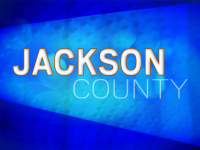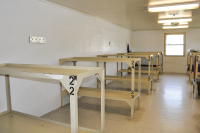Due diligence underway on MedWest hospital split
MedWest hospital leaders have hired an outside consulting firm to help them analyze the pros and cons of staying together versus dissolving their fledgling partnership. Also at stake: whether Carolinas HealthCare System will stay on as the hospitals’ management company.
Last summer, the hospitals in Jackson and Swain counties formally declared that they want out of the MedWest partnership forged three years ago with Haywood County and to part ways with Carolinas. The call was driven in part by dissatisfaction among the medical community in Jackson and Swain.
An uprising in Jackson’s medical community cited cultural differences with Haywood’s medical community, a perceived underdog status, fear that local health care services would be siphoned away by Haywood, and an eroding bottom-line.
But to dissolve MedWest, it takes agreement by three-fourths of the MedWest board members. Since half the MedWest board hails from Haywood — which didn’t necessarily share the same dissatisfaction — the next move wasn’t clear.
Should hospital leaders in Haywood let Jackson and Swain go amicably, or should they fight to keep MedWest together?
Related Items
The strategic hospital consulting firm Stroudwater Associates has been hired in part to help MedWest leaders examine their options.
The firm will also analyze MedWest’s business outlook and market position “in relation to national and regional trends as a result of health reform, market demand, competitive challenges, referral patterns and the like to determine future expected volumes for the system,” according to a public statement.
Hospital leaders aren’t elaborating beyond the written statement issued last week. They are playing their cards close to their vest as they assess the best path forward based on Stroudwater’s analysis, which should be completed by June.
Seeking a bigger partner
MedWest’s relationship with Carolinas HealthCare System could naturally be part of the fallout. Carolinas, which has a network of 36 hospitals under its umbrella, was hired by MedWest to serve as a management entity.
If MedWest is dissolved, the affiliation with Carolinas would likely end, too.
That would leave the hospitals on the prowl for a new partner to join up with. In fact, both hospitals have been casually putting out feelers to see what interested parties are out there.
Reverting to their former status as independent, stand-alone hospitals simply isn’t plausible given today’s financially trying environment, according to Don Dalton, spokesperson for the N.C. Hospital Association.
Of the 131 hospitals in North Carolina, only 25 are still independent stand-alone hospitals.
Small, rural hospitals across the country have scurried to the protection of bigger ones in recent years, seeking a safe harbor from those financially trying times. They’ve also been banding together with other small hospitals in neighboring communities — as was the case with MedWest — in hopes of shoring up their weaknesses.
Inevitably, not all of them work out. While somewhat rare, MedWest wouldn’t be the first partnership to dissolve and part ways.
“It is not uncommon that after a few years, they unaffiliate. They might affiliate for five years and then go off and affiliate with another hospital,” said Lisa Phillips with Irving Levin Associates, a research firm that tracks hospital acquisitions and mergers.
It would, however, be the first hospital partnership in North Carolina to dissolve, according to Dalton.
Machinations over a business structure aside, hospital leaders have emphasized the mission would be the same — to provide compassionate, quality health care close to home — as would the doctors, nurses and staff, which are the lifeblood of a hospital.
But the community could find itself once again having to get its mind around a new name on the entrance sign out front.
“It can cause confusion,” Phillips said. “It can give the impression they don’t know what they are doing.”
The formation of MedWest wasn’t technically a merger. No money or assets changed hands. Both kept balance sheets. But day-to-day, the hospitals were supposed to function as a team and blend their operations.
Many of the hospital partnerships fall somewhere in this loose category.
“We call them mergers, acquisitions, and O.W.A.’s — which stands for Other Weird Arrangements,” said Dalton. “We see them in every guise they can be created in. There is no cookie cutter approach to these situations because individual hospitals and individual markets are all very unique.”
Nationwide, there were 90 such deals in 2011 and 100 in 2012, according to Irving Levin Associates.
Recently, clusters of already-partnered hospitals are now merging with other clusters to make even larger hospital systems. Previously, large entities took on one new hospital at a time, gradually building a network of smaller hospitals around a large flagship. But now, existing networks are merging into even bigger systems.
“Even these big chains are in play,” Phillips said.
As consolidation increases, just a handful of large hospitals systems could be left.
That means less competition, which is a good thing for the hospitals that no longer have to pour resources into competing for patients. But it can also tread into anti-trust territory.
In Georgia, two recently merged hospitals ran afoul of the Federal Trade Commission and are now being forced to dissolve.
“They are going to make them unwind it,” said Phillips.
There’s only a handful of reasons that would prompt hospitals to voluntarily go through the headache and expense of dissolving a partnership.
One is money — namely, did the merger help their bottom line as hoped?
“They are all trying to get more efficient,” Phillips said. “They are seeing things getting tighter and tighter. They are looking for cost savings, and if the cost savings aren’t there, they can always undo it and try again with another partner.”
The bottom line in mergers is often all about the bottom line. It was a critical factor for Haywood Regional Medical Center and Harris Regional Hospital. But both still lost money last year.
Haywood and Harris certainly aren’t alone. Roughly one-third of hospitals in North Carolina are losing money. Roughly one-third are profitable. The remaining third are hovering precariously around the barely breaking even mark, Dalton said.
Not surprisingly, the two-thirds who are either losing money or in the fragile zone are mostly the smaller, rural hospitals.
“Hospitals are all built to serve the needs of our community, so their financial fortunes are tied very much to the financial fortunes of their communities,” Dalton said. “The rural areas are skewed more rural and poorer than the urban areas.”
Rural hospitals have more patients on Medicare and Medicaid, which means they don’t recoup the actual costs of providing care. They also have more patients without insurance.













